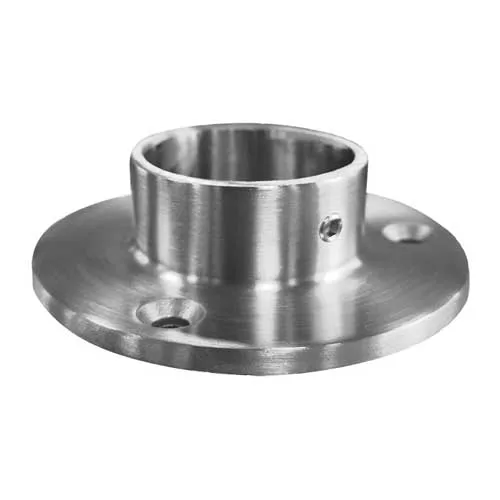Clearing the Air: Understanding the Importance of Laboratory Fume Hoods

In the dynamic realm of scientific research, laboratories are at the forefront of innovation, exploration, and discovery. Amidst the intricate apparatus, cutting-edge equipment, and specialized lab furniture, there exists a critical component that ensures both the safety of researchers and the integrity of experiments – the laboratory fume hood. This blog aims to shed light on the paramount importance of laboratory fume hoods, emphasizing their role in maintaining a safe and controlled environment. As we delve into the subject, we will explore the evolution of laboratory fume hoods, the significance of choosing the right laboratory fume hood manufacturer, and the synergy between fume hoods and other essential lab elements like metal lab cabinets.
Contents
The Evolution of Laboratory Fume Hoods
The concept of laboratory fume hoods can be traced back to the early 20th century when the understanding of occupational safety and the hazards associated with laboratory work began to take shape. The initial designs were rudimentary, primarily focusing on containing and extracting noxious fumes generated during experiments. Over the years, laboratory fume hoods have undergone significant evolution, incorporating advancements in materials, design, and technology.
Early fume hoods were often constructed from wood and glass, featuring a vertical sash and a manually adjustable exhaust system. While these rudimentary designs served their purpose to some extent, they lacked the precision and safety features that modern laboratory research demands. As scientific research expanded into diverse disciplines with unique challenges, the need for specialized fume hoods grew.
Contemporary laboratory fume hoods are engineered with a focus on safety, efficiency, and user-friendliness. They come equipped with advanced airflow control systems, smart monitoring technologies, and materials that resist chemical corrosion. The evolution of laboratory fume hoods mirrors the ever-changing landscape of scientific inquiry, adapting to meet the demands of cutting-edge research.
The Role of Laboratory Fume Hoods in Safety
Laboratory fume hoods play a pivotal role in maintaining a safe working environment within research facilities. Their primary function is to contain and remove hazardous fumes, vapors, and particulate matter generated during experiments. This is achieved through a well-designed ventilation system that ensures the extraction of harmful substances, preventing their dispersion into the laboratory space.
Key Safety Features of Modern Laboratory Fume Hoods:
- High-Efficiency Airflow: Advanced airflow systems in modern fume hoods ensure the effective capture and removal of hazardous substances. This not only protects researchers but also contributes to the overall safety of the laboratory environment.
- Sash Design: The sash of a laboratory fume hood is a crucial component that separates the researcher from potentially harmful materials. Modern fume hoods feature ergonomic and transparent sashes, allowing researchers to observe and manipulate experiments while maintaining a barrier against dangerous fumes.
- Smart Monitoring: Many contemporary fume hoods are equipped with smart monitoring systems that provide real-time data on airflow, sash position, and overall performance. This ensures that the fume hood is operating within optimal safety parameters.
- Materials and Construction: The materials used in the construction of laboratory fume hoods are carefully chosen for their resistance to chemical corrosion. This ensures the longevity of the fume hood and prevents material degradation that could compromise its safety features.
Choosing the Right Laboratory Fume Hood Manufacturer
Selecting a reliable laboratory fume hood manufacturer is a critical decision for any research facility. The market is saturated with various options, each offering different features, specifications, and safety standards. To make an informed decision, it is essential to consider the following factors:
- Experience and Reputation: An experienced laboratory fume hood manufacturer with a solid reputation is more likely to provide high-quality and reliable products. Look for manufacturers with a track record of delivering effective and safe solutions to research facilities.
- Compliance with Standards: Laboratory fume hoods must adhere to strict safety standards and regulations. Choose a manufacturer whose products comply with industry standards, ensuring that your laboratory remains in compliance with safety guidelines.
- Customization Options: Research needs can vary greatly between laboratories. A reputable manufacturer should offer customization options to meet the specific requirements of different research environments. This includes variations in size, airflow, and additional safety features.
- After-Sales Support: The relationship with a laboratory fume hood manufacturer extends beyond the initial purchase. Consider manufacturers who offer comprehensive after-sales support, including maintenance services, calibration, and technical assistance.
- Innovation and Technology: Advancements in technology continue to enhance the safety and efficiency of laboratory fume hoods. Choose a manufacturer that embraces innovation and incorporates the latest technologies into their products.
The Synergy of Laboratory Fume Hoods and Metal Lab Cabinets
While laboratory fume hoods address the ventilation and safety aspects of laboratory work, the integration of other essential elements, such as metal lab cabinets, contributes to the overall efficiency and organization of the laboratory space.
- Storage and Organization: Metal lab cabinets provide secure and organized storage for chemicals, equipment, and research materials. Proper organization not only enhances efficiency but also reduces the risk of accidents and ensures a clutter-free workspace.
- Chemical Compatibility: Metal lab cabinets are available in a variety of materials, including stainless steel, which is known for its chemical resistance. Choosing cabinets made from materials compatible with the chemicals used in the laboratory is crucial to prevent corrosion and ensure the integrity of stored substances.
- Space Optimization: The strategic placement of metal lab cabinets in conjunction with laboratory fume hoods contributes to optimal space utilization. This is particularly important in laboratories where space is at a premium, and every square foot must be utilized efficiently.
- Durability and Longevity: Metal lab cabinets are known for their durability and longevity. They can withstand the demands of a laboratory environment, including exposure to chemicals and frequent use. Investing in high-quality, durable cabinets ensures a longer lifespan and reduces the need for frequent replacements.
Conclusion
In the ever-evolving landscape of scientific research, laboratory fume hoods stand as guardians of safety, protecting researchers from the potential hazards of their work. The evolution of these critical safety devices mirrors the advancements in scientific inquiry, with modern fume hoods incorporating cutting-edge technologies and materials to ensure optimal performance.
Choosing the right laboratory fume hood manufacturer is a crucial step in establishing a safe and efficient research environment. Considerations such as experience, compliance with safety standards, customization options, and after-sales support play a vital role in making an informed decision.The synergy between laboratory fume hoods and other essential lab elements, such as metal lab cabinets, contributes to the overall functionality and organization of the laboratory space. As laboratories continue to push the boundaries of scientific exploration, the importance of investing in high-quality, safety-focused equipment becomes increasingly evident. By understanding and prioritizing the role of laboratory fume hoods, research facilities can create an environment that fosters innovation while safeguarding the well-being of those at the forefront of scientific discovery.





